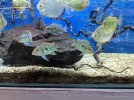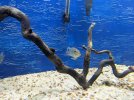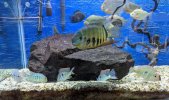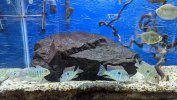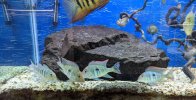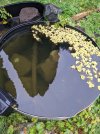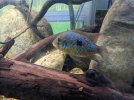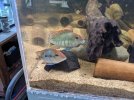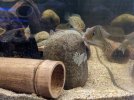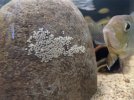You are using an out of date browser. It may not display this or other websites correctly.
You should upgrade or use an alternative browser.
You should upgrade or use an alternative browser.
Geophagus sp.
- Thread starter fishguy1978
- Start date
They aren't mouthbrooders per se, but after hatching either or both parents may take the fry into their mouths. Very interesting behaviours.they aren’t mouth brooders are they?
fishguy1978
Legendary Member
fishguy1978
Legendary Member
fishguy1978
Legendary Member
Beautiful! It looks to be 5-6” from this perspective …. Is that close?
fishguy1978
Legendary Member
Over 8in I thinkBeautiful! It looks to be 5-6” from this perspective …. Is that close?
cjag
Well-Known Member
Saw him in person yesterday. He's a big boy. Pushing 9"Beautiful! It looks to be 5-6” from this perspective …. Is that close?
fishguy1978
Legendary Member
Beautiful! It looks to be 5-6” from this perspective …. Is that close?
Now I'm going to have to catch him and measureSaw him in person yesterday. He's a big boy. Pushing 9"

fishguy1978
Legendary Member
I was able to measure both the male(8in) and the female(5.75in).
fishguy1978
Legendary Member
Moved all the redheads to the 120g. I have enough levamisole coming from select aquatics that I can dose the entire fish room if necessary. Unfortunately, I didn't notice the little parasite bubble on the O. eigenmanni until after moving the M. Hypsauchen into the 220g. I figure I'm already cross contaminated so I will medicate both tanks.
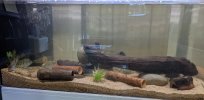

fishguy1978
Legendary Member
fishguy1978
Legendary Member
Caught in the act! Nice!

fishguy1978
Legendary Member
fishguy1978
Legendary Member
Day 3 update: Eggs are gone and the parents are still defending the area. I'm assessing that the pair are holding the wigglers.
fishguy1978
Legendary Member
Day 11: as of yesterday evening both were still holding. I may try to move them to my planted 55g.
I've always found this breeding strategy to be fascinating: it starts out as if they were typical substrate spawners, then transitions to buccal care of the young just like bona fide mouthbrooders. As it's clear that mouthbrooding is the more advanced breeding strategy, this probably represents an intermediate stage during the evolutionary transition from substrate spawning to mouthbrooding. It's also interesting that the brood size is small for a typical substrate spawner, but large for a typical mouthbrooder; again supporting the idea of an intermediate stage. It's not often in biology that we get to see these kinds of 'missing links.'Day 11: as of yesterday evening both were still holding. I may try to move them to my planted 55g.
Back to more practical matters; why do you want to move them? It's always risky to move fishes that are mouthbrooding, especially if that are not experienced. I see you've got rainbow juvies as dithers (of course); why not move them, even if it's just a few at a time? And/or install a tank divider? Good luck; these are gorgeous and interesting fishes.

